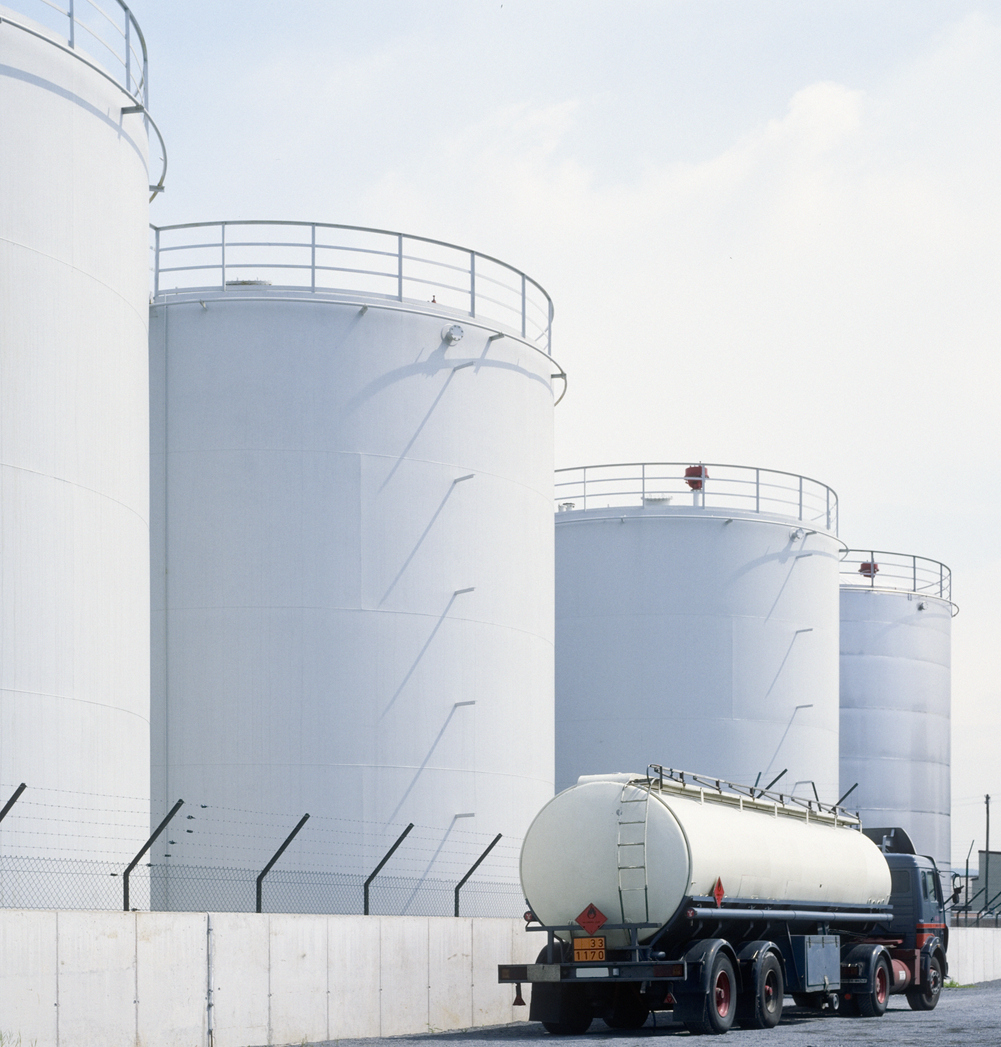Ensuring Safety and Compliance: The Importance of Storage Tank Inspection in Nigeria
Ensuring Safety and Compliance: The Importance of Storage Tank Inspection in Nigeria
As Nigeria’s oil and gas industry continues to thrive, the importance of ensuring safety and compliance within storage tank facilities cannot be overstated. In this blog post, we will delve into the critical role that regular storage tank inspections play in maintaining a safe working environment, protecting the surrounding community, and preventing costly environmental disasters. Join us as we explore why thorough inspection protocols are crucial for businesses operating in Nigeria’s booming energy sector.
Introduction to Storage Tank Inspection in Nigeria
Introduction to Storage Tank Inspection in Nigeria
Storage tanks are an essential part of many industries, including oil and gas, chemical, and water treatment. These large containers are used to store various liquids such as petroleum products, chemicals, and water. In Nigeria, storage tanks play a crucial role in the country’s economy by facilitating the storage and transportation of these valuable resources.
However, with their importance comes the need for regular inspection to ensure safety and compliance with regulatory standards. The inspection of storage tanks is a critical aspect that should not be overlooked as any failure or malfunction can lead to disastrous consequences for both the environment and human health.
In Nigeria, there are various types of storage tanks used for different purposes. Some common examples include above-ground vertical tanks, horizontal cylindrical tanks, underground storage tanks (USTs), and spherical tanks. Each type has its unique characteristics and requires specific inspection methods.
The primary purpose of storage tank inspections is to identify potential risks or defects that could compromise the integrity of the tank or its contents. These risks can include corrosion, leaks, cracks, structural failures, or inadequate maintenance practices. Without proper inspections and maintenance procedures in place, these risks can escalate into significant incidents such as explosions or environmental pollution.
To ensure safety and compliance with regulatory standards in Nigeria’s storage tank industry, several guidelines have been established by various agencies such as the Department of Petroleum Resources (DPR) and Federal Ministry of Environment (FME). These guidelines outline specific requirements for installation, design criteria, materials used for construction, maintenance procedures,and inspection techniques.
Inspections should be conducted by certified professionals who have adequate knowledge and experience in handling different types of storage tanks. They must also possess relevant certifications from recognized bodies such as American Petroleum Institute (API), National Association of Corrosion Engineers (NACE), or American Society for Nondestructive Testing (ASNT).
In conclusion,
the proper management of storage tank facilities is crucial for the safety of both workers and the environment. Regular inspections help identify potential hazards and ensure compliance with regulatory standards in Nigeria. In the following sections, we will delve deeper into the importance of storage tank inspections and the various methods employed to carry them out effectively.
Why is Storage Tank Inspection Important?
Storage tank inspection is a crucial aspect of ensuring safety and compliance in Nigeria. These inspections involve thorough examination, evaluation, and testing of storage tanks to detect any potential hazards or risks that could compromise their integrity. This process is essential for various reasons, including protecting the environment, preventing accidents and spills, complying with regulations, and prolonging the lifespan of storage tanks.
One of the primary reasons why storage tank inspection is critical is to safeguard the environment. In Nigeria, many industries rely on storage tanks to store hazardous chemicals and substances that can cause severe harm if leaked into the environment. Regular inspections help identify any leaks or damage to these tanks before they become significant problems. This proactive approach not only protects the surrounding ecosystem but also prevents potential contamination of water sources used by nearby communities.
Additionally, frequent inspections are necessary for preventing accidents and spills that could lead to catastrophic consequences. Over time, wear and tear can weaken storage tanks’ structural integrity, making them vulnerable to failures such as leaks or ruptures. These incidents can result in dangerous chemical spills that pose a threat to human health as well as environmental damage. By identifying and addressing issues during inspections, these risks can be greatly reduced.
Complying with regulations set by government bodies is another crucial reason why storage tank inspection should not be overlooked. In Nigeria, there are strict regulations in place governing the installation and operation of storage tanks in different industries like oil and gas production facilities or manufacturing plants. Regular inspections ensure that these tanks meet all safety standards set forth by regulatory bodies such as the Department of Petroleum Resources (DPR) or Federal Ministry Of Environment (FMEnv). Failure to comply with these regulations can result in heavy fines or even legal consequences.
Moreover, regular inspection also plays a vital role in extending the lifespan of storage tanks. Over time, corrosion from exposure to harsh elements can weaken a tank’s structure leading it towards deterioration faster than expected. By conducting routine inspections and promptly addressing any issues, maintenance and repairs can be done to prolong the tank’s lifespan. This not only saves money on costly replacements but also ensures that storage tanks continue to operate safely and efficiently.
Storage tank inspection is a critical aspect of ensuring safety and compliance in Nigeria. It helps protect the environment, prevent accidents, comply with regulations, and extend the lifespan of these tanks. Neglecting this essential process can have severe consequences for both industries and communities. Therefore, it is crucial to prioritize regular inspections to maintain the integrity of storage tanks and ensure the safety of all those involved.
– Safety and Compliance Regulations in Nigeria
Safety and compliance regulations are crucial aspects of any industry, especially when dealing with potentially hazardous materials such as petroleum products. In Nigeria, the oil and gas sector is a major contributor to the economy, making up approximately 9% of the country’s GDP. With such a significant part of the economy relying on this industry, it is essential to ensure that safety and compliance regulations are strictly adhered to.
The regulatory body responsible for overseeing safety and compliance in the oil and gas sector in Nigeria is the Department of Petroleum Resources (DPR). The DPR was established under the Petroleum Act of 1969 and is charged with regulating all aspects of petroleum operations in Nigeria. This includes monitoring storage tank installations, conducting inspections, enforcing standards, issuing licenses and permits, and maintaining records.
One of the primary safety concerns in storage tank installations is preventing leaks or spills that can lead to environmental contamination or even explosions. To address this issue, DPR has set strict guidelines for installation design, construction materials, quality control measures, maintenance procedures, and regular inspections. These regulations aim to prevent accidents caused by equipment failure or human error.
Another critical aspect of safety and compliance regulations in Nigeria involves fire protection measures. Storage tanks containing flammable liquids must have appropriate fire suppression systems installed to mitigate potential risks. These systems include fire alarms, sprinkler systems or foam deluge systems that can quickly extinguish fires before they spread.
In addition to physical safety measures, there are also specific health requirements that must be met for storage tank installations. For instance, workers handling hazardous materials must be trained on proper handling procedures and provided with personal protective equipment (PPE) such as goggles or respirators where necessary. Regular medical check-ups are also mandated for workers exposed to harmful substances used in storage tanks.
Aside from these specific guidelines for storage tank installations themselves, there are also broader environmental laws that companies must comply with when operating in Nigeria’s oil industry. These laws aim to protect the environment and ensure that companies operate in a sustainable and responsible manner. Failure to comply with these regulations can result in hefty fines or even criminal charges.
Safety and compliance regulations in Nigeria are vital for protecting workers, the environment, and the economy as a whole. Companies operating storage tank installations must adhere to these regulations set by the DPR to prevent accidents, minimize environmental damage, and maintain sustainability in the oil industry. Non-compliance is not an option when it comes to ensuring safety and security for all stakeholders involved.
– Potential Hazards of Uninspected Tanks
Potential Hazards of Uninspected Tanks:
Uninspected storage tanks pose a significant threat to both human lives and the environment. Failure to regularly inspect these tanks can lead to a range of hazards, including structural failures, leaks, and spills. These hazards can result in severe consequences for individuals, communities, and the economy.
One of the primary risks associated with uninspected tanks is their potential for structural failure. Over time, storage tanks are subjected to various external forces such as weather conditions, corrosion, and mechanical stress. Without proper inspection and maintenance, these factors can weaken the tank’s structure, making it more susceptible to collapse or rupture. A structural failure could result in a catastrophic release of stored substances into the surrounding environment or cause injuries or fatalities among workers and nearby residents.
Leakage is another significant hazard posed by uninspected tanks. Piping systems connected to storage tanks may develop cracks or become corroded over time; thus causing leakage of hazardous substances into soil or water bodies posing a risk to public health and natural resources. Leaks also increase the likelihood of fires or explosions if flammable materials are being stored.
Moreover, uninspected tanks present a real danger in terms of environmental pollution. The contents stored in these tanks could be highly toxic chemicals that have far-reaching impacts on soil fertility and water quality if released into the environment due to an accident caused by lack of regular inspections.
It is important to note that uninspected storage tanks not only endanger humans but also have dire economic repercussions. In case of an accident resulting from uninspected tank failure or leakage leading to environmental contamination, businesses may face legal action from affected parties seeking compensation for damages incurred.
Additionally, regulatory authorities may impose hefty fines on companies found guilty of neglecting tank inspections; this could significantly impact their bottom line.
In conclusion,
the potential hazards associated with uninspected storage tanks cannot be overstated. It is vital for companies in Nigeria that operate such tanks to prioritize regular inspections and maintenance to prevent accidents, protect the environment, and ensure compliance with regulations. Failure to do so could have severe consequences for all parties involved.
The Role of Wigmore Trading in Storage Tank Inspection
Wigmore Trading is a leading provider of storage tank inspection services in Nigeria. With years of experience, expertise, and cutting-edge technology, Wigmore Trading has played a crucial role in ensuring the safety and compliance of storage tanks in the country.
The primary role of Wigmore Trading in storage tank inspection is to help companies comply with local regulations and international standards. In Nigeria, there are strict regulations set by the Department of Petroleum Resources (DPR) that require regular inspections of storage tanks to ensure their integrity and prevent any potential hazards. Failure to comply with these regulations can result in hefty fines or even the shutdown of operations.
Wigmore Trading conducts thorough inspections using advanced tools such as ultrasonic thickness gauges, laser scanning technology, and remote visual inspection equipment. These methods allow for non-destructive testing (NDT) which minimizes the risk of damage to the tank during inspections while providing accurate results.
One key aspect that sets Wigmore Trading apart from other inspection companies is their team of highly trained and certified professionals. The inspectors at Wigmore are knowledgeable about different types of storage tanks, including above-ground and underground tanks used for storing petroleum products, chemicals, water, and more. This expertise enables them to identify any potential issues that may compromise the integrity or safety of the tank.
In addition to regulatory compliance, another important role played by Wigmore Trading is helping clients extend the lifespan of their storage tanks through proactive maintenance. Regular inspections can detect early signs of corrosion or structural damage that could lead to leaks or failures if left unattended. By identifying these issues early on, Wigmore can provide recommendations for repairs or maintenance before they become major problems.
Moreover, Wigmore also assists clients with record-keeping and documentation required for regulatory purposes. The company maintains detailed reports on each tank’s condition after every inspection along with photographic evidence. This information not only helps companies maintain compliance but also serves as a valuable resource for future inspections and maintenance work.
Wigmore Trading plays a crucial role in ensuring the safety and compliance of storage tanks in Nigeria through their expertise, advanced technology, and commitment to quality service. With their assistance, companies can avoid costly fines and shutdowns while also extending the lifespan of their storage tanks for optimal usage.
– Company Overview
Company Overview
In Nigeria, one of the leading companies specializing in storage tank inspection is XYZ Inspection Services. Established in 1995, XYZ has been providing comprehensive and reliable inspection services to various industries such as oil and gas, petrochemicals, chemicals, and manufacturing.
With over 25 years of experience and a team of highly qualified inspectors, XYZ has earned a reputation for its commitment to safety and compliance. The company is registered with all relevant regulatory bodies in Nigeria including the Department of Petroleum Resources (DPR) and the National Environmental Standards and Regulations Enforcement Agency (NESREA). This ensures that their services adhere to national standards and regulations.
XYZ’s state-of-the-art equipment combined with their expertise allows them to perform thorough inspections on different types of storage tanks. These include above-ground tanks, underground tanks, pressure vessels, pipelines, and more. They also offer non-destructive testing (NDT) methods such as ultrasonic testing, magnetic particle testing, radiographic testing, visual inspection, and more.
One of the key factors that sets XYZ apart from other inspection companies is their focus on safety. The company adheres to strict safety protocols during every stage of the inspection process to ensure the protection of both personnel and facilities. It also conducts regular training sessions for its employees on safety procedures to maintain high standards at all times.
As part of its commitment to compliance, XYZ stays updated with industry regulations and employs certified inspectors who are well-versed in international codes such as API 653/650/620/570/510. This enables them to provide accurate assessments while ensuring that clients’ tanks meet all necessary standards for safe operation.
Moreover, XYZ understands that downtime can be costly for businesses relying on storage tanks for their operations. Therefore, they strive to minimize any disruption by offering flexible scheduling options based on clients’ needs. They also provide timely reports after each inspection so that necessary repairs or maintenance can be completed promptly.
In addition to storage tank inspection, XYZ also offers other related services such as corrosion monitoring and risk-based inspections. This comprehensive approach ensures that clients’ tanks are not only safe and compliant but also cost-effective in the long run.
With its years of experience, commitment to safety and compliance, and a team of highly trained professionals, XYZ Inspection Services is a trusted partner for companies looking to ensure the safety and efficiency of their storage tanks in Nigeria.
– Services Offered for Tank Inspections
Services Offered for Tank Inspections:
Tank inspections are crucial for the safe operation and compliance of storage tanks in Nigeria. In order to ensure that these inspections are carried out effectively, it is important to understand the various services offered for tank inspections. These services not only help in detecting potential hazards but also aid in maintaining the integrity of storage tanks.
1. Visual Inspection:
Visual inspection involves a thorough examination of the external and internal components of a storage tank. This includes checking for any signs of corrosion, leaks, or physical damage. It is usually the first step in tank inspection and is essential in identifying any visible issues that may require further investigation.
2. Ultrasonic Testing:
Ultrasonic testing uses high-frequency sound waves to detect defects or abnormalities in a storage tank’s structure. This non-destructive testing method is commonly used to measure the thickness of tank walls and identify any areas that may require repairs or replacement due to thinning.
3. Magnetic Flux Leakage (MFL) Testing:
Magnetic Flux Leakage (MFL) testing is another non-destructive method used for inspecting aboveground storage tanks (ASTs). It utilizes magnetic fields to detect metal loss caused by corrosion, cracks, or other forms of damage. MFL testing can be done on both empty or filled tanks and provides accurate results without disrupting operations.
4. Acoustic Emission Testing:
Acoustic Emission (AE) testing is another non-invasive technique used for monitoring ASTs during inspection. It involves detecting stress-induced noise emitted from within a structure, which can indicate potential problems such as cracks or leaks.
5. Radiographic Testing:
Radiographic testing uses X-rays or gamma rays to examine the internal structure of a storage tank without causing any damage. This method helps in identifying issues such as corrosion, pitting, weld defects, and other types of deterioration that cannot be detected through visual inspection alone.
6. Vacuum Box Testing:
Vacuum box testing is a method used to detect leaks and defects in the bottom of an aboveground storage tank. It involves creating a vacuum between the tank floor and the bottom plate and then applying a liquid solution on the surface. Any bubbles that appear indicate potential leaks or cracks.
7. Cathodic Protection Testing:
Cathodic Protection (CP) testing is essential for ensuring proper corrosion control in storage tanks. This method involves measuring electrical currents and potentials on the metal surfaces of a tank, to determine if CP systems are functioning properly.
These services offered for tank inspections play a crucial role in identifying potential hazards, maintaining compliance with regulations, and ensuring safe operations of storage tanks in Nigeria. Regular inspection using these methods will help mitigate risks and prevent any catastrophic incidents from occurring.
Types of Tanks and Their Inspection Requirements
Types of Tanks and Their Inspection Requirements
There are several types of storage tanks used in various industries for storing different types of materials. Each type of tank has its own set of inspection requirements to ensure safety and compliance with regulations. In this section, we will discuss the different types of tanks commonly used in Nigeria and their specific inspection requirements.
1. Steel Tanks: These are the most common type of storage tanks used in industries such as oil and gas, petrochemicals, and water treatment plants. They are made from steel plates that are welded together to form a cylindrical or rectangular shape. The inspection requirements for steel tanks include visual inspections for corrosion, structural integrity, and leakage, as well as non-destructive testing (NDT) methods like ultrasonic testing (UT) or magnetic particle testing (MPT) to detect any defects or cracks that may compromise the tank’s integrity.
2. Fiberglass Tanks: These tanks are made from fiberglass reinforced plastic (FRP) and are commonly used for storing corrosive materials. They have a high resistance to corrosion and can withstand extreme temperatures, making them ideal for harsh environments. The inspection requirements for fiberglass tanks include checking for cracks, blisters, or delamination on the inner lining using visual inspections or NDT methods like UT or MPT.
3. Concrete Tanks: These tanks are typically used for storing water, chemicals, or sewage. They are constructed by pouring concrete into a formwork that is reinforced with steel bars. The main concern with concrete tanks is corrosion due to exposure to chemicals or moisture over time. Therefore, regular inspections should be conducted to check for any signs of cracking or deterioration on the concrete walls using visual inspections or NDT methods like UT.
4. Underground Storage Tanks (USTs): As the name suggests, these tanks are buried underground and commonly used for storing petroleum products such as gasoline and diesel fuel at gas stations. Due to their underground location, USTs are more prone to corrosion and leakage, which can cause serious environmental damage. As a result, they require frequent inspections using methods like tank tightness testing or cathodic protection surveys to detect any potential leaks.
5. Aboveground Storage Tanks (ASTs): These tanks are usually used for storing large quantities of liquid materials and are installed above ground level. They can be made from various materials such as steel, fiberglass, or polyethylene. The inspection requirements for ASTs include visual inspections for signs of corrosion or leakage, as well as NDT methods like UT or MPT to check for defects on the tank’s walls.
It is essential to understand the type of tank being used and its specific inspection requirements to ensure safety and compliance with regulations. Regular inspections not only help in identifying potential issues but also extend the life of the tank and prevent expensive repairs or replacements in the future. Therefore, it is crucial for industries in Nigeria to prioritize storage tank inspections and follow all necessary protocols to maintain a safe working environment.
– Above Ground vs. Underground Tanks
When it comes to storage tanks, one important factor to consider is whether the tank is above ground or underground. Both types of tanks have their own advantages and disadvantages, especially when it comes to safety and compliance.
Above ground tanks are typically easier to install and maintain compared to underground tanks. This is because they can be easily accessed for inspections, repairs, and cleaning. In addition, above ground tanks are also usually cheaper to install as there is no need for excavation work.
However, despite its convenience, above ground tanks may pose a higher risk of fire or explosion due to their exposure to external elements such as extreme temperatures and potential vandalism. They are also more susceptible to corrosion from moisture in the air or harsh weather conditions.
On the other hand, underground tanks offer a more aesthetically pleasing option as they are hidden from view. They also take up less space on the surface which can be beneficial in areas with limited land availability. Additionally, being buried underground provides protection against external factors that could cause damage or contamination.
However, installing an underground tank requires excavation work which can be costly and time-consuming. Moreover, regular maintenance and inspection of these tanks may prove challenging as they are not easily accessible. This could potentially lead to issues going undetected until they become major problems.
In terms of safety measures and compliance with regulations in Nigeria, both above ground and underground tanks require strict adherence to guidelines set by regulatory bodies such as the Department of Petroleum Resources (DPR). Failure to comply with these regulations could result in penalties or even shut down operations.
One critical aspect that applies to both types of storage tanks is regular inspection and testing by certified professionals. This ensures that any potential issues are identified early on before they escalate into major safety hazards or violations.
Choosing between an above ground or underground tank ultimately depends on various factors such as budget constraints, available space, location-specific risks (e.g., climate), and regulatory requirements. Regardless of the type of tank chosen, it is crucial to prioritize safety and compliance through regular inspections to ensure the protection of both people and the environment.
– Petroleum vs. Chemical Storage Tanks
Petroleum and chemical storage tanks are used to store large quantities of flammable or hazardous materials. These tanks play a crucial role in various industries such as oil and gas, manufacturing, agriculture, and transportation. However, there is often confusion between the terms “petroleum” and “chemical” storage tanks. While both types of tanks serve similar purposes, they have significant differences that must be understood to ensure safety and compliance.
Firstly, the main difference between petroleum and chemical storage tanks lies in the type of material stored in them. Petroleum storage tanks are designed specifically for storing crude oil, gasoline, diesel fuel, or other refined petroleum products. On the other hand, chemical storage tanks are used to hold a wide range of liquid chemicals such as acids, solvents, fertilizers, pesticides, and corrosive substances.
The materials stored in these tanks have different properties that require specific design considerations. For instance, petroleum products may contain high levels of sulfur compounds that can cause corrosion if not properly stored. Chemicals also vary in their level of reactivity with metals or other substances commonly used in tank construction.
Another critical difference between these two types of storage tanks is their design specifications. Petroleum storage tanks are usually larger in size compared to chemical storage tanks since they need to accommodate higher volumes of liquid products. They also have a simple cylindrical shape with a domed roof or floating roof design.
On the other hand, chemical storage tanks come in varying sizes and shapes depending on the type of chemicals being stored. Some may require specialized features such as double walls or containment systems to prevent leakage or spills.
The construction materials used for these two types of storage tanks also differ significantly due to their contents’ varying characteristics. Petroleum products typically require steel construction with special coatings to prevent corrosion from exposure to moisture or sulfur compounds present in the fuel. In contrast, chemical storage tank materials can range from steel alloys to highly resistant plastics depending on the specific chemicals being stored.
In terms of safety and compliance, both types of storage tanks require regular inspections and maintenance to ensure they are in good working condition. However, chemical storage tanks may require more stringent regulations due to the nature of the materials being stored. This includes proper labeling, handling procedures, and emergency response plans in case of a spill or leak.
While petroleum and chemical storage tanks serve similar purposes, there are significant differences that must be considered for safe and compliant operations. It is essential to understand these distinctions and follow strict guidelines for inspection and maintenance to prevent any potential hazards or environmental risks.
Steps Involved in a Comprehensive Tank Inspection
A comprehensive tank inspection involves a detailed and thorough evaluation of all aspects of a storage tank to ensure its safety and compliance with regulations. This process is crucial in Nigeria, where the oil and gas industry heavily relies on storage tanks for the safe storage and transportation of various petroleum products.
The following are the steps involved in conducting a comprehensive tank inspection:
1. Preparation: The first step in a tank inspection is to prepare for the process. This includes obtaining relevant permits, ensuring that all safety protocols are in place, and gathering necessary tools and equipment.
2. External Inspection: The external inspection involves visually examining the exterior of the tank for any signs of damage or deterioration. This includes checking for any cracks, leaks, or corrosion on the walls, roof, foundation, and supports of the tank.
3. Internal Inspection: In this step, an inspector enters the tank to conduct a thorough assessment of its interior condition. Specialized equipment such as cameras or drones may be used to inspect hard-to-reach areas within the tank.
4. Non-Destructive Testing (NDT): NDT techniques are employed to detect any hidden defects within the structure of the tank that cannot be seen through visual inspections alone. These techniques include ultrasonic testing, radiographic testing, magnetic particle testing, and liquid penetrant testing.
5. Thickness Measurement: Measuring the thickness of a storage tank’s walls is crucial in determining its structural integrity. If there is significant thinning or corrosion present, it can compromise the strength of the tank and lead to potential leaks or failures.
6. Soil Evaluation: A thorough evaluation of soil conditions around and under the storage tanks is essential as it can affect their stability over time. Factors such as soil type, moisture content, compaction levels must be assessed to ensure proper support for the tanks.
7. Documentation: All findings from each step should be carefully recorded to create an accurate report that outlines any issues found and recommendations for repair or maintenance.
8. Repair and Maintenance: Based on the inspection report, necessary repairs and maintenance works should be carried out promptly to ensure the tank’s safety and compliance with regulations.
A comprehensive tank inspection is a critical process that ensures the safe operation of storage tanks in Nigeria. It helps identify potential hazards, prevent accidents, and maintain compliance with industry standards. Regular inspections should be conducted to ensure the ongoing safety and integrity of these vital structures.








Comments are closed.